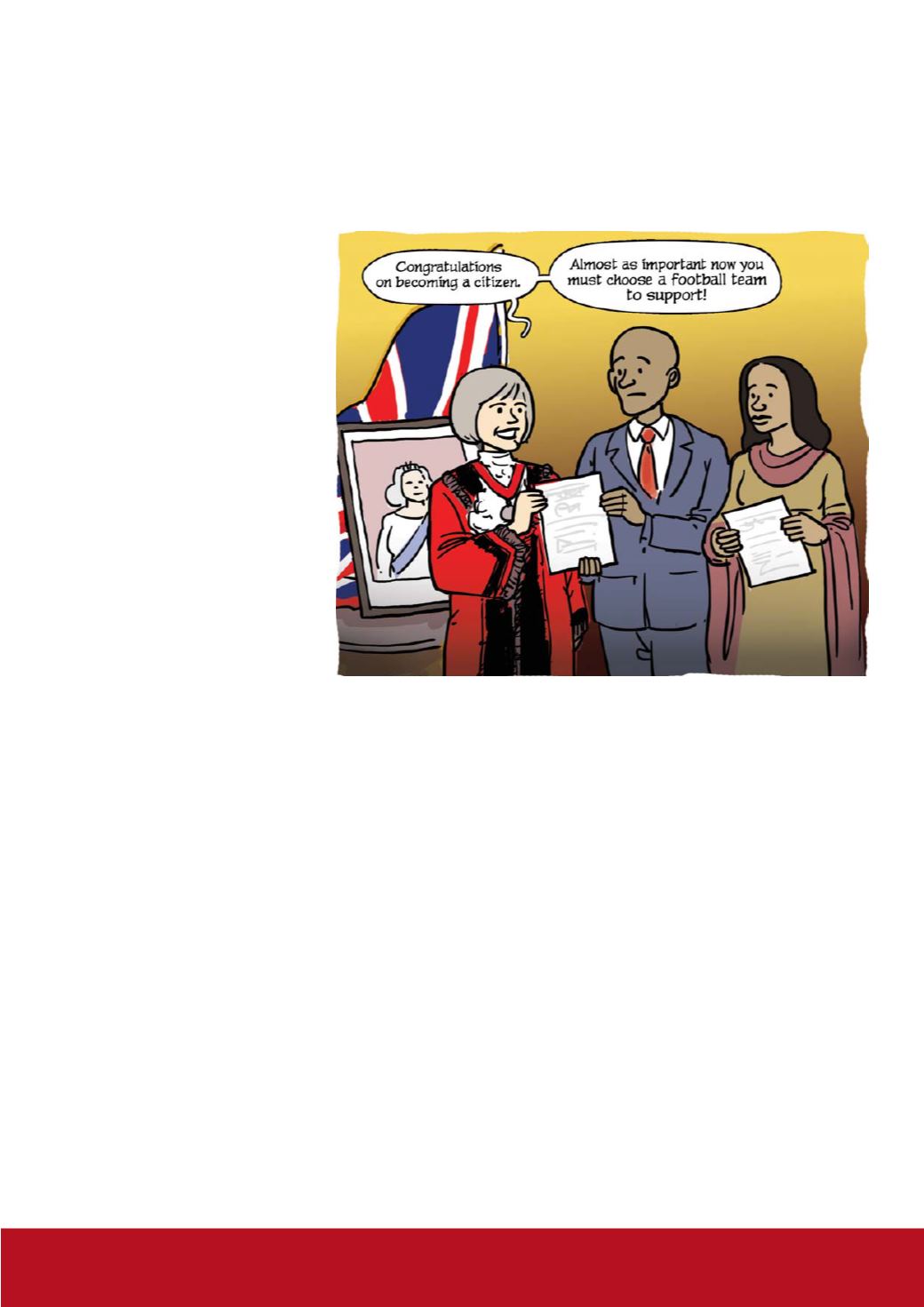
6
ISSUES: Citizenship
Chapter 1: Citizenship in the UK
Naturalisation as a British citizen: concepts
and trends
Thisbriefinggivesdetailsabout howmany foreigncitizensacquireBritishcitizenshipevery
year, their demographic characteristics, and the various bases for their grants of British
citizenship.
By Dr Scott Blinder
Citizenship grants per
year more than doubled
from 2000 to 2013 but fell
considerably in 2014
and 2015
In 2015, 118,100 foreign citizens
naturalised as British citizens. This
is down more than 40% from 2013,
when citizenship grants reached
almost 208,000, the largest annual
number since records began in 1962.
From 2009 to 2013, citizenship grants
averaged 195,800 per year.
According to the Home Office (2014),
the 2013 peak in citizenship grants
followed an increase in applications
in advance of changes to language
requirements, while lower numbers of
grants in 2014 were at least in part due
to the shifting of resources from UK
Visas and Immigration to HM Passport
Office. The number of decisions made
on citizenship applications in 2015 did
not increase in line with an increase in
the number of applications submitted
(applications increased by about
23,700 or 18% from 2014 to 2015),
suggesting that the declining trend in
citizenship grants may end in 2016 as
these applications are processed.
Lower
numbers
of
citizenship
applications in recent years are also
consistent with recent decreases in
grants of settlement/indefinite leave
to remain (from 241,200 in 2010 to
129,800 in 2012 and 154,700 in 2013),
which will have reduced the pool of
people newly eligible to apply for
citizenship.
The number of accepted
and rejected citizenship
applications is affected by
policy and administrative
changes
The acceptance rate for naturalisation
applications was increasing until 2013,
when 3.4% of applications ended in
refusal or withdrawal. This was down
from 3.9% in 2010, 9.3% as recently
as 2005, and at least 10% for most of
the 1990s. The increased acceptance
rates up to 2010 were at least partially
the result of new application checking
services that catch incomplete or
inadequate applications before they
are filed (Home Office, 2010: 10). In 2014,
4.7% of applications were refused rising
to 8.6% in 2015. According to the Home
Office (2016), this decline in thegrant rate
can be attributed to the introduction of
“enhanced checks on cases requiring
higher levels of assurance” in April 2015.
The trend in naturalisations has
several notable spikes that can be
explained as the result of changes to
law or administrative procedures. In
chronological order: 1974–1975 saw
an increase in grants to Pakistanis
following the Pakistan Act of 1973
(which created a temporary window for
Pakistani nationals to register as Citizens
of the United Kingdom and Colonies,
after which naturalisation would be
required as for non-commonwealth
nationals). Next, the increase in 1989
comes from the opening of a new
application
processing
centre
in
Liverpool, increasing administrative
capacity. Finally, increases in grants
through registration since 2003 may
reflect new provisions in the Nationality,
Immigration and Asylum Act 2002
(Home Office, 2010: Table A notes).
The introduction of the Life in the
UK test and more stringent English
language requirements in 2004 does not
seem to have changed the increasing
trend in naturalisations until 2013. It is
possible that there would have been
more naturalisations without these
new requirements (including not only
“Nationals of EU countries
made up only 11%of
citizenship grants in 2015”


